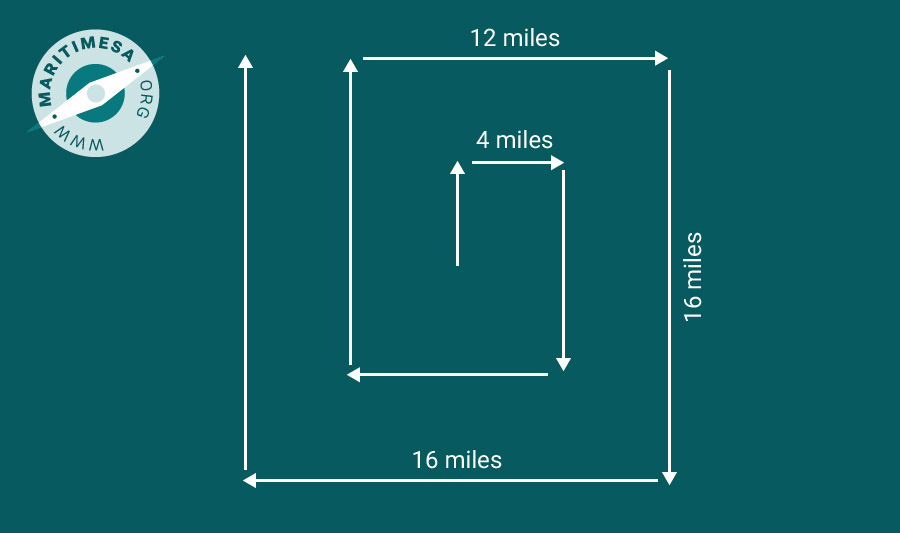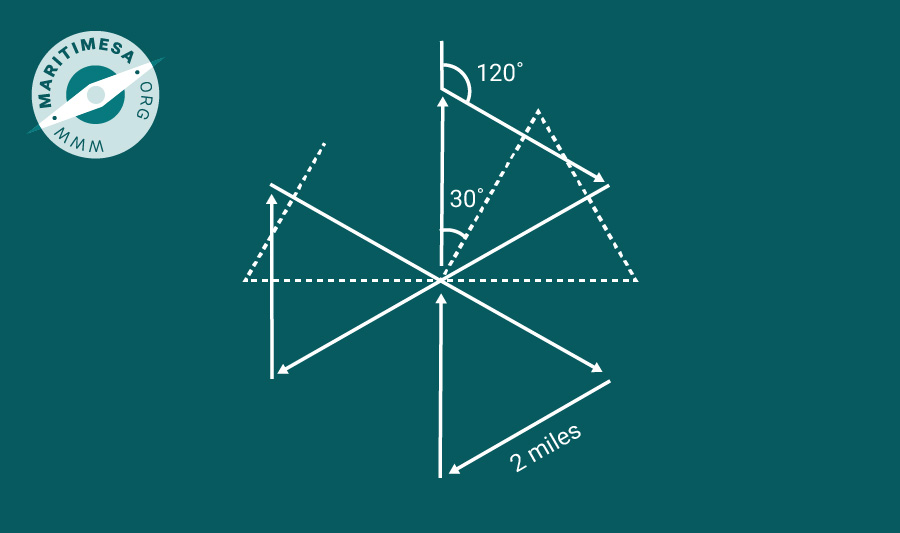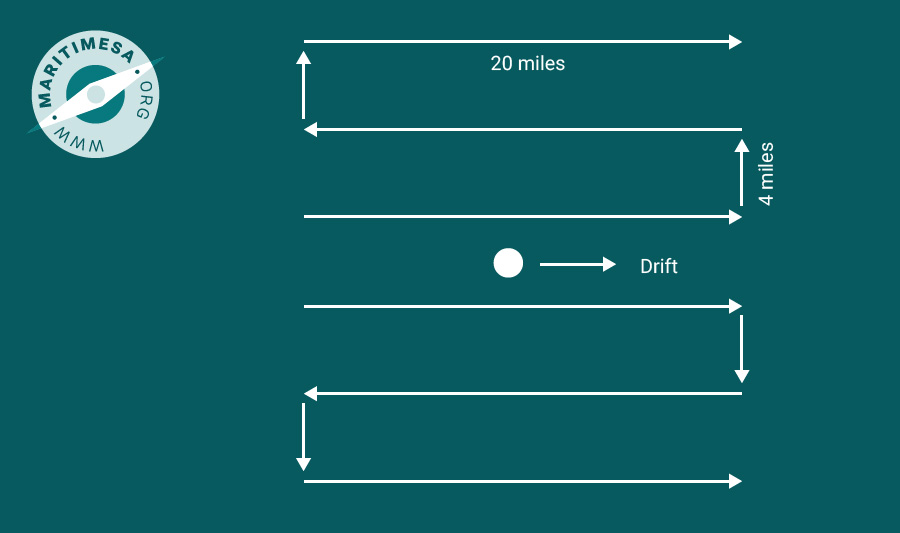It is of great importance that all rescue operations are properly coordinated and with the new Global Maritime Distress and Safety System (GMDSS), the prime responsibility for coordination falls on the shoulders of shore base authorities, ie the Rescue Coordination Centre (RCC). At sea the ship with the best communications is usually appointed as the Coordinator of Surface Search (CSS). By day the vessel so appointed will fly the flag-hoist “FB” and at night a distinctive light signal.
Types of searches. With the new automated distress and safety system, the location of a casualty is much easier than in the past, provided the vessel concerned is equipped with the equipment specified in the GMDSS. If a vessel in distress is not located immediately, a search is carried out of the area. The first step is to establish a datum (a position established as the search centre) based upon the following:
- The last reported position of the casualty and the time of the report.
- The interval that has elapsed since the report.
- Drift (the direction and rate of movement due to current and wind).
- Any other relevant information concerning the casualty.
The most probable area can be established by drawing a circle of 10 miles radius with the datum as centre. Depending on the circumstances and the number of search vessels available, one of the following searches can be carried out:
A single search vessel. If there is only one search vessel then either an expanding square or sector search is carried out. In both cases the datum forms the centre of the search.
- Expanding square search. With the expanding search, the vessel steams in a particular direction for four miles from the datum. It then alters course by 90° and steams for a distance of four miles. At the end of the leg it again alters course by 90° and steams for 8 miles. This is repeated in an expanding square fashion, increasing the distance steamed by four miles after each second leg (see the diagram).

Expanding square search.
- Sector search. With the sector search, the vessel steams in a particular direction for two miles beyond the datum. It then alters course by 120° and steams for another two miles before repeating the procedure. On the third leg it steams for four miles passing through the datum position along the way. (See diagram).

Sector search.
Two or more ships. If more search ships are available then a parallel search is conducted.
In a parallel search, the vessels commence ten miles up wind of the datum, their first course being in the direction of drift and passing 2 miles either side of the datum. Ten miles on the other side of the datum, each vessel alters course by 90°, each in the opposite direction to one another. After four miles they again alter course by 90° and steam in the reciprocal direction to their first course for 20 miles. At the end of this leg they repeat the procedure as indicated in the following diagram.

Search plan for two vessels.

